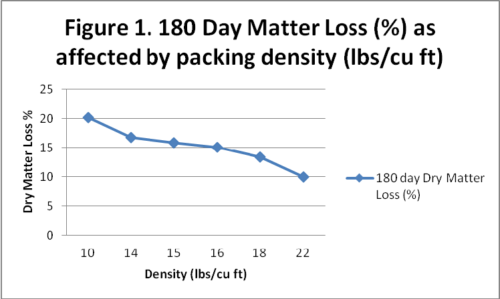Five High Value Tools That Help Improve Forage Quality
Posted: November 9, 2017 | Written By: Troy Brown, Form-A-Feed Forage Product Manager

Forage producers know they must pay attention to details when focusing on forage quality. Both old and new tools can be used to help improve forage Best Management Practices (BMP’s). Following are some of the most common, useful tools.
Forage Analysis Reports: Fermented forage volatile fatty acid (VFA) analyses, coupled with forage nutrient measurements have long been used in university and industry research trials to assess silage quality and feeding value. This information can be input into formulation systems and may also explain the type of fermentation the forage experienced. Understanding what these profiles mean and which microorganisms controlled the ensiling process can help predict silage nutrient values and prevent poor intake or performance if use of the forage is re-directed or properly managed. Analyses commonly included in silage fermentation reports are pH, lactic, acetic, propionic and butyric acids.
Proper sampling and sample handling techniques are critical, in order to obtain accurate information from any forage analysis. The acids being measured are hazardous and if not handled properly can volatilize and dissipate quickly before the sample ever arrives at the lab.
Among approaches used to compare or value forages is the Relative Feed Value and the more recently variation called Relative Forage Quality (RFQ). Both indices have similar range, but RFQ is perceived to be more sensitive to differences in forage value and can be converted to a prediction of energy value for cattle. Comparing lots of forages using RFQ could be used for determining forage allocation to animals, as well as valuation in buying and selling alfalfa and grass forages.
Thermometers: A compost thermometer is a simple tool that can be used to determine the temperature of your forage beyond the surface, typically 18 to 30 inches into the mass. Elevated temperatures above ambient conditions are an indication of oxidative fermentation by molds and yeasts. This type of fermentation will result in increased nutrient loss (shrink) and may lead to heat damage in the forage.


Thermal Imaging Technology: In the past few years, thermal imaging cameras (infrared) have become popular tools to help identify hot spots and spoilage the naked eye cannot identify a safe distance from a silo face. These cameras provide detailed surface temperature information and are changing how we manage forage. There are numerous variables, other than aerobic deterioration, that will affect surface temperature measurements, such as, sun exposure, ambient temperature, recent weather events, and moisture. Therefore, experience and depth of understanding forages and the use of thermal imaging cameras are important to help ensure that pictures are not misinterpreted. Thermal imaging is an easy-to-use tool to help identify opportunities for improvement.
Silage Density Measurement: There are multiple methods for determining forage density. A physical core sample is often the most accurate, but because of the dangers associated with approaching a silage face, many producers and consultants have focused more on determining forage density with safer alternative methods. A popular approach is the Silage Pile Density Calculator developed by Brian Holmes, Professor & Extension Specialist, University of Wisconsin and Richard Muck, Professor & Agricultural Engineer, U.S. Dairy Forage Research Center and USDA-ARS, Madison, WI. With some fairly simple inputs such as pile dimensions, tractor weights, packing time, layer thickness, dry matter content, and a few others, the software will calculate forage density. This estimate combined with the silage density feed-out method should provide a fairly accurate forage density.

Attaining a high silage density is also important since density and dry matter content determine the porosity of the silage. Porosity, in turn, sets the rate at which air moves into the silo and subsequently the amount of spoilage which occurs during storage and feed-out. Procedures for each of these methods can be found here.
Decision Software: The University of WI forage website contains other excellent tools for evaluation and management of forages. Among these, Milk 2006 Forage Evaluation System is an excellent tool to evaluate individual corn hybrids as well as alfalfa and grass varieties. The software will calculate information in two formats, milk/ton of forage and milk/acre. Determining the Value of Silage Management is another valuable decision software program designed by Dr. Brian Holmes. Candidly answer a few questions, supply the spreadsheet with some basic inputs, and the software will calculate the value of a particular management change.
These and other forage management tools, when used carefully and correctly, can help consultants and producers identify and improve forage BMP’s.